Integrating Trauma-Informed Principles Into Your Internal Communications & Workplace Culture

Author and therapist Resmaa Menakem defines trauma as “a thing or things that happened either too much, too soon, too fast, or for too long without something being attended to by something reparative or healing.” Trauma is common and pervasive and can impede an individual’s health, creativity, focus, and ability to thrive in the workplace. Nearly 60% of American men and 50% of women have experienced at least one trauma in their lives (National Center for PTSD). It’s the root cause of so many of our nation’s most pressing challenges (e.g., substance misuse and suicide) and prevalent public health challenges, including diabetes, heart disease, cancer, and high blood pressure. Leaders have a unique opportunity to create an environment where everyone feels safe, valued, and empowered. By weaving trauma-informed practices into culture, you can foster supportive workplaces that fuel your entire team’s well-being and success. Healing and resiliency are built in healthy connections and relationships, and to create a trauma-informed workplace, consider how SAMHSA’s principles can be better integrated into your organization: Safety: Ensure your workplace is physically and emotionally safe for all team members, which includes fostering a culture of respect and inclusivity. Create spaces where team members can book private rooms for decompression or quiet work. Offer regular, anonymous workplace safety surveys that include emotional and psychological safety questions. Trustworthiness & Transparency: Build trust with your team by being transparent in your communications and decision-making processes. Provide clear expectations and follow through on your commitments to foster a sense of reliability and trust. Establish a “Reverse Mentoring” program where junior team members mentor leadership on current workplace challenges and perspectives. Peer Support: Encourage and facilitate peer support networks within your organization. This can include resource groups, mentorship programs, and opportunities for folks to connect and share their experiences. Collaboration & Mutuality: Foster a culture of collaboration and mutuality, where team members are encouraged to work together and support one another. Involve them in decision-making processes and seek their input and feedback to promote a sense of ownership and investment in the organization. Empowerment, Voice & Choice: Empower your team by providing opportunities for professional development, skill-building, and career advancement. Encourage them to use their voice and provide choices in how they engage with their work and the organization. Cultural, Historical & Gender Issues: Be mindful of your team’s diverse backgrounds and experiences. Ensure your workplace culture is inclusive, equitable, and respectful of cultural, historical, and gender differences. Embracing the trauma-informed approach isn’t a one-time exercise–it’s a commitment to an ongoing and constantly developing process of building upon your team’s strengths while mitigating challenges. We believe these practices provide a more collaborative and thoughtful environment for all employees, regardless of background or circumstance. One could think of these approaches as beneficial to their entire workforce rather than a ‘fix’ for those affected by trauma. If you’re ready to get started, please contact us today. GO DEEPER: Toolkit: Trauma-Informed Workplaces (Campaign for Trauma-Informed Policy and Practice) Guide: Trauma-Informed Meetings, Discussions & Conversations (Campaign for Trauma-Informed Policy and Practice) (AI Disclaimer: proofed by Grammarly and lightly edited using Claude)
A Manifesto for Brands Who Care
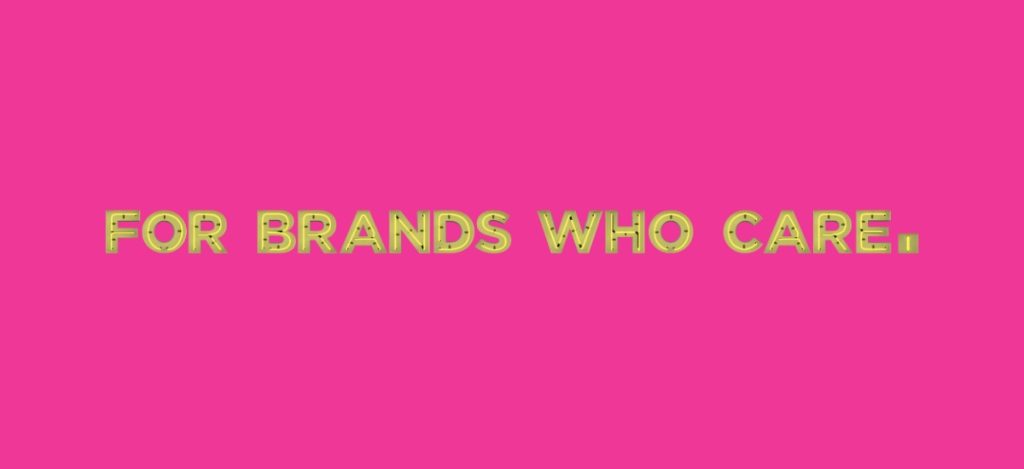
In the world of marketing, there’s a lot of noise. A cacophony of messages, all vying for attention, all claiming to be the best, the biggest, the most innovative. A million messages a day, competing to distract you and rob you of your productivity. A pop-up ad, push notification, text… “does your vehicle have an extended warranty”? Amidst this noise, it’s easy for brands to lose their way, to forget what they stand for, to lose sight of their mission in a race for clicks and attention At MKTNG, we believe in a different approach. We believe in the power of purpose, the strength of conviction. We believe that the brands that truly matter are the ones that care – about their mission, organization, community, and world. The Power of Caring We’ve been on a journey. As an integrated marketing agency based in California’s capital, Sacramento, our company exists at the epicenter of a number of major societal issues. Power generation, transportation, insurance & financial services, forest management, homelessness, and various populations who have experienced trauma, Sacramento is a hub of thought leadership, policy, activism, innovation, action, and in some ways a laboratory for many of these issues. This proximity has brought us into contact with a diverse array of clients, each with unique missions and visions. We’ve learned something profound. The most rewarding results, the most impactful campaigns, the most resonant messages – they all come from working with clients who care. Clients who care deeply about their mission, are passionate about their organization, and are committed to making a difference. Clients who don’t phone it in. Sometimes, this caring takes the form of an altruistic mission that betters the community or the environment. Sometimes, it’s simply about caring for their brand, nurturing it, growing it, protecting it, for the betterment of their staff and to best service their customers. But always, at its core, it’s about caring. For Brands Who Care This is why we’ve adopted the tagline “For Brands Who Care”. Because we believe that money is not an empowering vision. We believe that a brand that cares about more than just profits is a brand that inspires loyalty, fosters community, and makes a real difference in the world. And THAT is what we find motivating. This declaration is more than just a tagline. It’s a commitment. A commitment to our clients that we will work tirelessly to help them achieve their goals. A commitment to our team that we will foster an environment that values passion, creativity, and work that is rewarding. A commitment to ourselves that we will remain true to our mission of helping brands that care. The Future is Caring As we look to the future, we are excited. Excited about the opportunities that lie ahead. Excited about the chance to work with new clients who share our belief in the power of caring. Excited about the impact we can make. At MKTNG, we care. We care about our clients, our work, and the impact we can have on our communities. We are excited to work with brands who share this vision. We believe caring is a generative act that fosters caring by others. Like a contagious smile, caring gives birth to more caring. We are excited to be ambassadors of bringing greater care into the world. Because at the end of the day, we believe that the brands who care are the brands that matter. The brands that stand for something. The brands that make a difference. The brands that, amidst the noise, ring out clear and true. This is MKTNG. For Brands Who Care.
The Power of Trauma-Informed Communications & Marketing: Why CEOs Must Embrace This Approach

Trauma is a pervasive issue that affects people from all walks of life, with research suggesting that 60% of men and 50% of women experience at least one trauma in their lives (National Center for PTSD, 2022). Without support and resources, trauma can negatively impact your health, well-being, and quality of life. There is no quick fix because it impacts people in different ways at different times, and it’s rooted in some of our nation’s most pervasive challenges, including substance misuse, intergenerational poverty, and community violence. Paradigm shift Thankfully, there is a growing recognition that we can’t solve problems with the same thinking that created them. And that’s where the trauma-informed approach enters the conversation. More than a buzzword, it’s a commitment to an ongoing (and ever-evolving) approach to acknowledging the prevalence of trauma, promoting transformational resilience, and fostering a supportive/inclusive environment. How does this apply to the world of communications? (i.e., marketing, public relations, crisis communications, graphic design, messaging, content creation, social media, community engagement, podcast/video production, etc.) It flips the outdated model of using fear, shock, scarcity, click/ragebait, and violence to capture our targeted audiences’ attention. It admits that the “if it bleeds, it leads” local news strategy harms society more than it helps. And it reconciles with the fact that “buy this to make you happy” messaging is actually making more and more people miserable. Take Apple’s recent iPad commercial. Many people (myself included) thought it was tone deaf and dystopian. It was trying to brag about how many tools fit in an iPad–and yet, the imagery was of Big Tech, literally destroying things that set humanity apart from the natural world and make life worth living. Universal tools that have served us for millennia, including musical instruments and art. Some may point out that it’s garnered 2.3 million views on its official YouTube channel, so mission accomplished. I say that’s short-sighted and antiquated. Imagine, instead, a commercial showing people worldwide using these tools throughout history with a split screen of a modern person practicing the same activity on their iPad. How would that make you feel about choosing Apple products? (And a reminder that Apple fully understands and knows how to execute this type of commercial.) If your targeted audiences are healing from or working through traumatic experiences, utilizing an antiquated communications approach may grab short-term attention, but it may also erode long-term trust, loyalty, and engagement. Trauma-informed communications can demonstrate a brand’s commitment to understanding and supporting its audience’s well-being. When your audience feels seen, heard, and valued, they are likelier to engage, which is essential for building lasting relationships and driving meaningful growth. How do we get there? The Substance Abuse and Mental Health Services Administration (SAMHSA) provides a framework for understanding and responding to the impact of trauma on individuals and communities. Their six principles (safety, trustworthiness/transparency, peer support, collaboration/mutuality, empowerment/voice/choice, and cultural/historical/gender issues) can be integrated into any organization, system, sector, or industry, including communications. A few tips include: Fully represent the communities you serve in your messaging and design by creating a sense of physical and emotional safety Always provide accurate and empathetic information (i.e., meet your audience where they are) Use inclusive language Avoid gratuitous content, sensationalism, and exploitation Avoid greenwashing and propaganda and instead communicate your value proposition with transparency and authenticity Focus on storytelling “heroes” over “villains”—call in rather than out Highlight stories of lived experiences who have overcome adversity (SEE ALSO: Helpful tips for sharing lived experiences) Provide accessible options for your audience to communicate with you and provide feedback Be transparent about your data collection and privacy practices, and provide easy-to-understand information about how personal data is used Provide resources and information that empower your audience to make informed choices Educate yourself and your team on the cultural and historical context of the communities/audiences you serve In the coming months, we’ll publish blogs that cover each tip in-depth with real-world examples. Trauma-informed communications is not just a trend or a box to check but a fundamental shift in how we approach story-telling and advocacy. It’s an ongoing process of learning and refining your tactics to create a more inclusive, empowering, and authentic relationship with your audience, fostering deeper connections and brand loyalty. If you’re ready to take the first step in integrating trauma-informed principles into your organization’s communications, contact us today to learn how we can help you create a more resilient and impactful brand. Go deeper Podcast: The Importance Of Strength-Based, Trauma-Informed And Inclusive Marketing (Managing Marketing) (AI Disclaimer: proofed by Grammarly and lightly edited using Claude)
A Big Day For All of Us
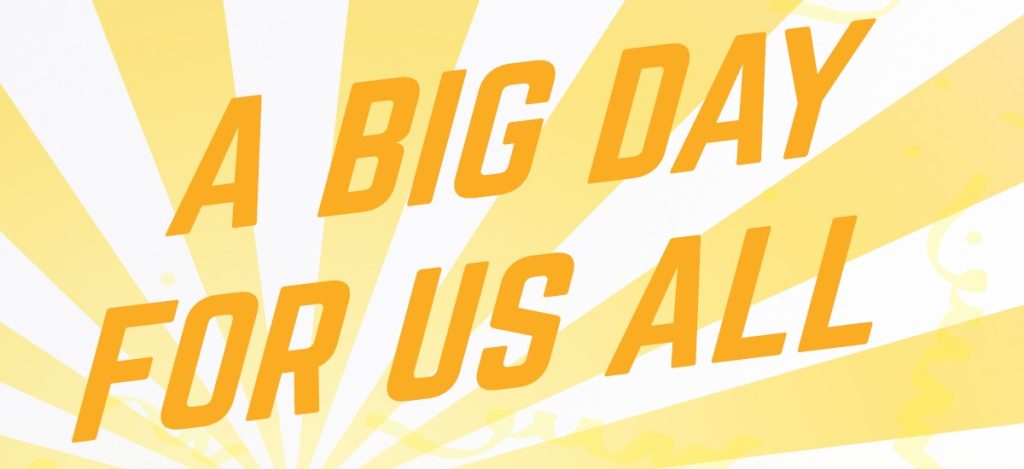
Next Tuesday is a big day. A big day for us, and you too, even if you don’t know it. The first Tuesday in May. As it has been for the past two years, and from here on out, let it be known as the Big Day of Giving. Next Tuesday, tens of thousands of normal, everyday people will answer the call to become exceptional contributors to our community, by donating to one of 570 regional nonprofits. MKTNG is proud to be participating in the Big Day of Giving, having helped plan and deliver basic training for participating nonprofits in January, and by managing social media for the campaign ahead of and during the Big Day of Giving. We also coordinated with the Sacramento Business Journal to host a nonprofit focused Connectionopolis prior to the Big Day. Organized by the Sacramento Region Community Foundation, the Big Day of Giving is a somewhat self explanatory campaign, to activate the citizens of our four county region as philanthropists. The campaign is a 24 hour giving marathon from midnight to midnight on May 3rd. Over the past two years this campaign has raised nearly 9 million dollars from over 30,000 donors in the region! The goal of the campaign this year is to raise 6 million dollars. How can you (or your company) participate? Donate money Donate time – find a non-profit hosting an event, or participating in the halftime celebration at Caesar Chavez Park, and ask to lend a hand. Match employee donations – Last year and this year, MKTNG has matched employee donations on the Big Day of Giving, up to $100 per employee. Advocate for the Big Day by changing your profile photo on Facebook or Twitter HERE. Share about your favorite charity on social media- Sharing is caring, but nothing beats cold hard CASH! Make a donation and challenge your network to meet or beat your donation.
Sacramento PRoud – Notes From My PRSA Talk
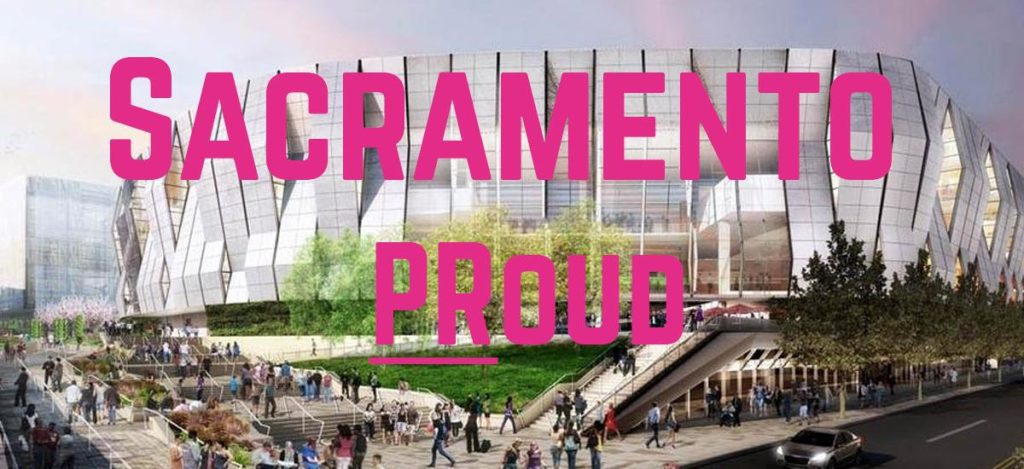
Last week I had the honor of being the special guest at the PRSA mixer at Downtown & Vine. During the meeting, I enjoyed the opportunity to meet many of the members as well as a contingent of students from PRSSA Sacramento State and local community colleges, all in attendance. I spent some time cogitating over public relations leading up to the meeting. Admittedly, I was inspired about the future of our city in light of the response to our Art Hotel project. In my time working in PR in Sacramento, we have had our ups and downs. Now, more than ever, I believe there is a bright future for our city, and likewise, those fortunate to work in PR. Whatever sector you represent, government, sports, non-profits, education, technology, the green economy, construction, legal, food and agriculture, the arts or LGBT issues and more, there is a shifting and growing landscape in Sacramento that presents us with an exciting future. As Sacramento continues to evolve, and in many ways lead the nation, each of these sectors’ stories will be told through the lens of public relations. I hesitate to point out, while we may witness these stories from the mouths, pens or fingers of the media, they will most likely originate from PR professionals. Original reporting by the news media has been suffering for the past few years. News, online and offline, has become an echo chamber. For better or for worse, the news for the foreseeable future belongs to the communications teams with the strongest media relationships – and who craft the best storylines. I was excited to speak with so many students at the PRSA event. Their most common question: what advice do I have for people looking to get ahead in PR? My advice is almost the same no matter what industry a young person finds oneself; Work hard on your relationships – all of them. Cultivate great relationships with the media, peers, mentors, business owners and pretty much everybody else. Business, and certainly public relations, is about people taking your calls and answering your emails. If you cannot forge and maintain positive relationships, you have no business in public relations. It’s right there in the name! Hone your craft and find an employer that appreciates your contribution. We live in a wonderful and growing city. If you want to be a part of it, you have to show up. I don’t mean for work. Too many great PR professionals I know with have spent too long locked in agency offices (or as in-house comm professionals), constantly chasing deadlines. Some agencies don’t seem to understand that Good Marketing Comes from Happy Marketers. Employers can show their appreciation in two ways; fair pay, and providing a balanced work environment that fosters civic engagement. Regardless, the future for our industry is bright. We live in a great city that’s getting better. Get out and enjoy the growth of our region (out in “public”) and play well with others (the “relations” part of the equation) and you’ll reap a fair share of our region’s future.
This is How We Do
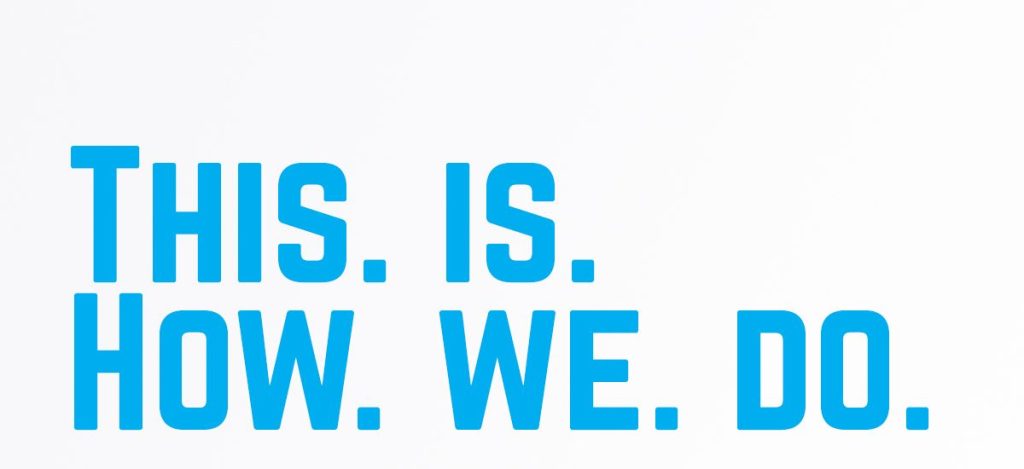
Recently a friend inquired, in very general terms, “how we do what we do” as a business owner? In a moment of clarity, I offered the following response:“We only hire the best talent we can find. We delight our customers. We charge what we are worth. We use technology when ever possible to be efficient, but are careful never to replace human interaction.” I’ve reflected upon this philosophy several times since. These answers still ring true to me, in regards to what our company values. Reflecting on these four values, here are some notes I assembled on each. Hiring the Best Talent The way we value the human touch in the workplace has ebbed and flowed over the last few centuries. In the industrial age, we broke down the delivery of goods and services into individual measurements. We distilled complex manufacturing into individual work units. We took the thinking out of work. Things once crafted by skilled craftspeople were suddenly manufactured. There are several industries that still thrive on this approach to work. But the fact is, professional services industries — accounting, lawyers, marketing, medicine and others — have developed a poor reputation of hiring throngs of free (interns), low cost labor (recent college graduates) or contractors to saddle with the grunt work (research, drafting briefs, auditing, making coffee) of managing client work. Recently there has been a cultural shift in the workforce regarding one’s attitude toward work. Employees no longer wish to be a cog in the machine. Rather, employees want their work to mean something. They are also increasingly interested in how their contribution affects outcomes. They are tired of micromanagement, and they are simultaneously seeing independence and autonomy while also desiring a collegial and rewarding workplace culture. These are the types of people that we like to hire. Cultivated in their craft, with an eye towards the final product — independent-minded, but not loners. Hiring people that are a strong cultural fit, in addition to being skilled, reaps a valuable reward. Not only is it vital to employee loyalty (which decreases hiring costs), it also fosters stability, which then leads to greater client loyalty. Delight the Customer Customers have no shortage of choice. Providing good service is key to retaining clients. Fear of losing clients however, is uninspiring. Anybody who has ever started a business or changed jobs knows that in addition to making more money, what drives us is a better way of doing things. Whether it be doing things quicker, smarter or perhaps more human, we see market opportunities that we believe we can exploit. One of the the opportunities we are seizing at MKTNG is exceeding expectations and creating delighted customers. Nothing is more rewarding than putting out great work that you are proud of. Delighted customers, much more than just satisfied, are more than return customers. They are friends… and they can eventually become family. We Charge What We Are Worth Competing on price in the modern business climate most often results in slashed margins. Narrowing margins do not sustain businesses, especially those focused on talent and delighting customers. Competing primarily on price is a short sighted strategy. Competing in a marketplace that values great ideas, results, and value is a far better place to be. If you find your customers are first and foremost focused on cost, you’re in front of the wrong customers. By seeking out customers that value what we do, high quality work and lasting relationships, we are able to produce greater results over time than we would while working with clients focused on the costs of individual transactions. We use technology whenever possible, to be efficient, but not to replace human interactions. Technology is a powerful tool in business. It has become so pervasive in our lives, and we believe businesses should actually be cautioned where and how they use it. Our company embraces the use of technology. Our client files and our project management software are all in the cloud. This allows our team to be collocated, or geographically dispersed. It allows us to access our entire company through apps on our phones in addition to our laptops. Any coffee shop can become an office at a moment’s notice. Technology keeps us lean and agile, while our competitors are stuck in their offices or to their desks. It reinforces our “out of office” culture and facilitates our work in the community. In an effort to save time and money, many companies place technology on the front lines of their business, creating a barrier between their customers. This is where we draw the line. Technology should serve to improve and enhance the customer experience, not hinder it. What makes companies in different industries successful varies. However, in service oriented industries, we see these as somewhat pivotal. What is most critical to your business?
PINK is for girls
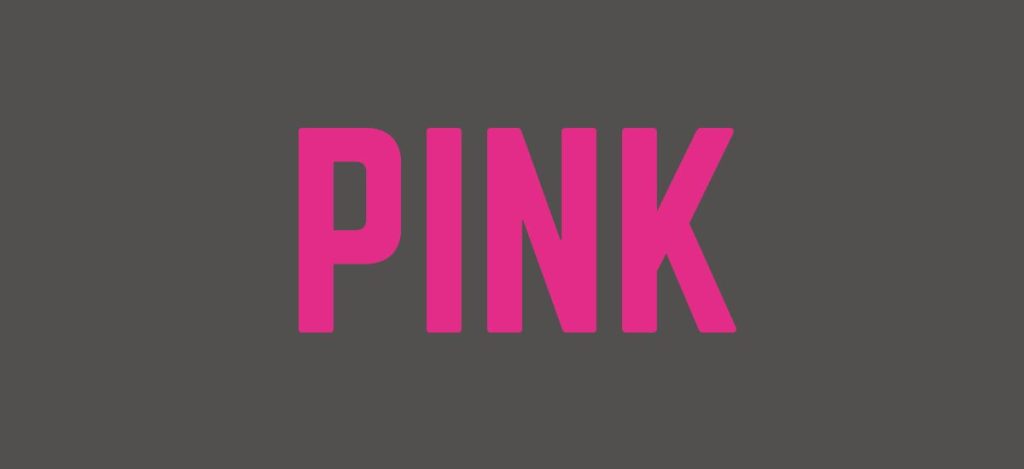
This is what I thought when I was in the third grade. For a brief period in junior high, hot pink was all the rage, and I was in with both feet. Today, I love pink. I’m actually wearing a pale shade of it as I write this post. I enjoy wearing a variety of vibrant colors. Being colorful is bold, and also has an influence on arousal and memory. That’s besides the point however. For those of you who think pink is for girls, I’m okay with that, but we may disagree on just what that means. Let’s begin with the psychology of color. Whenever you begin thinking about a brand and a logo, color is top of mind. We often associate blue with business – think IBM and Microsoft. Red and yellow is owned by the fast food trade. Red is known for being bold, and purple is regal and inspires confidence. The problem with this, however, is that the psychology of color is a trailing indicator of what a color has meant over a preceding period of time. It does not represent the evolving perspective toward color or, in the case of pink, what it means to be a woman. Our idea of womanhood has changed. I know mine has changed since the third grade. Society’s view and portrayal of women has changed. As a father of two young women, I embrace the nature of women as strong and independent. We have seen an evolution in how brands approach women. An obvious example would be the Dove campaign. However, I am thinking of a couple more nuanced examples. These recent ad campaigns are a fitting indication of how society and, as a result, advertising is taking note of femininity’s new identity: Take the #LikeAGirl campaign from Always that recasts how young girls perceive their own physical capabilities. Or, another favorite of mine is ballerina Misty Copeland for Under Armour, definitely redefining your notion of strength and femininity. When we began working on the branding for MKTNG, we discussed with our creative team that we wanted our logo to reflect professionalism, but we also wanted it to exude innovation and fresh ideas. We were excited when they presented us with two color concepts with bold and fresh colors. The most appealing to us was the bright pink that we ended up choosing for the logo you see today. We were enamored with the color and the energy it brought to our logo. Sometimes a symbol changes or evolves. Pink represents femininity still, sure, but the symbol of femininity itself is evolving. Pink is fresh, it exudes love and passion. It is also growing to mean strength and innovation. The notion that pink = women = delicate is no longer the prevailing impression. Rather, it’s refreshing, modern, and confident. In many cases, femininity now represents strength. We hope that daring to use it in our branding conveys that we’re not afraid to make an impression, and that we’re confident that we’ll make an impression on our target market, brands that wish to make a unique impressions, as opposed to appealing to everyone. When representing yourself, in business or otherwise, we believe it’s important to be at once authentic and confident. Whatever that means for your particular brand, we encourage you to strive to meet that intersection, and have the courage to challenge convention.
Just What You Need
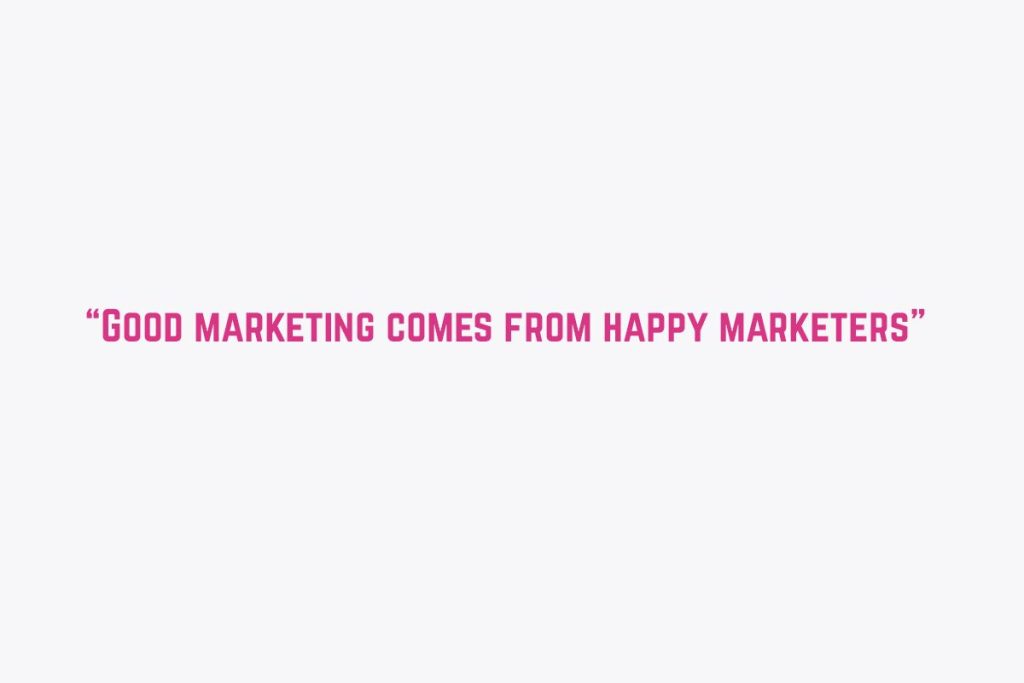
There’s something to be said for saying only what needs to be said. When we started MKTNG we knew the world didn’t need another typical agency that can ‘do it all’… we decided to focus on just what’s needed. A part of launching a new company is building on, or taking away from, existing business models. In our case we were bound and determined to strip away as much as possible, and to focus on a workplace culture that is as rewarding as it is productive. This thought leads us to a couple of questions. What is necessary and what is wasteful? What contributes to an organization’s culture and what dampens morale and creativity? Personally, I have long felt that the California Milk Advisory Board has it right, ”good milk comes from happy cows”*. In fact, I think that this pertains to each of us in our respective workplaces. Over the past decade major employers have begun to alter the work environment of employees to maximize employee satisfaction, hence the communal open office and work-from-home benefits that have proliferated. For us, we keep our focus on that “good marketing comes from happy marketers”. We believe; There is something about a finished product that shines when it has been imbued with the passion and ethos of its creators. There is something about the finished product when it reflects the culture on the inside. There is something about the finished products origin story that gives it integrity. ORIGINS MATTER In Sacramento we believe in this wholeheartedly, when it comes to our food, origins matter. We are surrounded by much of the world’s best food. Where our food is grown matters and how it is produced has a significant impact on the taste. So much so, we even concern ourselves with the quality of life of the farmers and their communities. This is the essence of the “Farm to Fork” movement. It differentiates Sacramento from anywhere else in our nation because it truly matters where our food comes from, the soil it is borne in, the water and nutrients it is fed, who grew it and how it arrived on our table. OUR ROOTS GO DEEP When I started MKTNG, I felt as though the roots of our company matters. The ecosystem surrounding our productivity and creativity seeps into our final product. Sacramento is a fertile environment rich with innovators, hackers, makers, designers, coders, ideators and more. New ideas are encouraged and risks rewarded. Birthing a company in this environment makes a difference. We have stripped away what we don’t need. We partner with people who get us, and who we can do something for in return – reciprocity is an important value in a professional community. At /MKTNG we produce things unlike any other agency. We believe that how we work keeps us more than competitive. We believe that how we work produces better results. We have discarded what was unnecessary for a modern agency and we have adapted the tools and workflow of a digital start-up. We have adopted a flat management structure to become more flexible. Our infrastructure is our people and creativity is our intellectual property. We are agile and adaptable, we are lean. This frees our team to focus on results and solutions that matter. JUST WHAT YOU NEED *At no time during the reading of this post should any MKTNG employees or partners be compared to cows.
